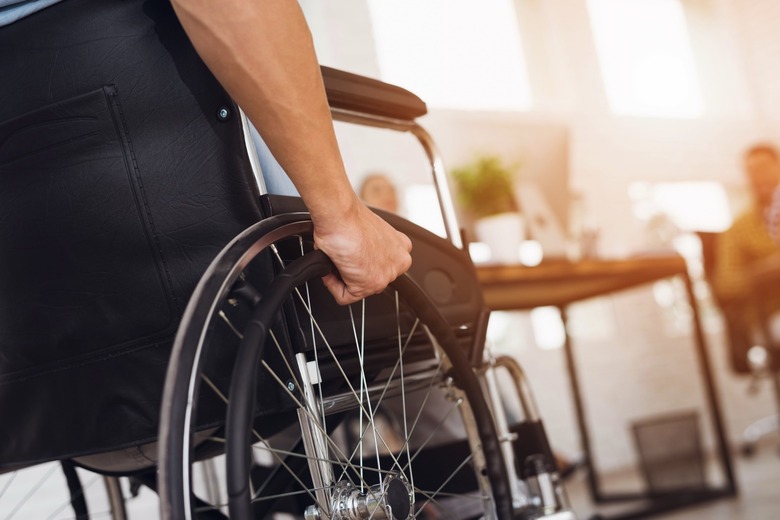Doctors Might Have Figured Out How To Cure Spinal Cord Injuries
- Doctors from Yale successfully demonstrated a potential precursor for a paralysis cure following spinal cord injuries.
- The researchers collected stem cells from the bone marrow of patients suffering from various types of spinal cord injuries and then injected the patients with their own stem cells.
- Within weeks after the stem cell therapy, the doctors observed substantial improvements in more than half of the patients, including the ability to walk or use their hands.
Accidents that impact the spinal cord can leave survivors with various degrees of paralysis. The worst type of spinal cord injuries can lead to permanent loss of sensory and motor function, meaning people will lose feeling below the region of the injury as well as movement. As it stands, there's no way to restore spinal cord function.
Researchers are studying various ways to treat spinal cord injuries, though. A team from Yale and the Sapporo Medical University in Japan has figured out a way to potentially cure paralysis and restore sensory and motor function. The doctors used stem cells procured directly from the injured volunteers to repair spinal cord injuries.
The researchers collected stem cells (MSC) from a patient's bone marrow, which were then injected intravenously into the same person. This led to significant improvement in motor function for more than half of the patients in the study. More than half regained the ability to walk or use their hands after receiving the treatment. According to a news release, the results were obtained within weeks of the injection, and the treatment had no substantial side effects.
The patients sustained non-penetrating spinal cord injuries from falls or minor trauma. After the accidents, they lost motor function and coordination, reported sensory loss and bowel and bladder dysfunctions. The MSCs were cultured from each patient's bone marrow via a process that took a few weeks to finish.
The American Spinal Injury Association Impairment (ASIA) impairment scale is what's used to measure spinal cord injury severity — here's what it looks like:
- Grade A: Complete sensory or motor function loss below the level of injury.
- Grade B: Sensation is preserved below the level of injury, but motor function is lost.
- Grade C: Motor function below the level of injury is preserved, with more than half of the main muscles receiving a less than 3 grade on the ASIA motor score.
- Grade D: Motor function below the level of injury is preserved, with more than half of the main muscles receiving at least a 3 or greater grade on the ASIA motor score.
- Grade E: Normal sensation and motor function.
The ASIA scale is important to interpret the results of the study, as published in Journal of Clinical Neurology and Neurosurgery.:
No serious adverse events were associated with MSC injection. There was neurologic improvement based on ASIA grade in 12 of the 13 patients at six months post-MSC infusion. Five of six patients classified as ASIA A prior to MSC infusion improved to ASIA B (3/6) or ASIA C (2/6), two ASIA B patients improved to ASIA C (1/2) or ASIA D (1/2), five ASIA C patients improved and reached a functional status of ASIA D (5/5). Notably, improvement from ASIA C to ASIA D was observed one day following MSC infusion for all five patients. Assessment of both ISCSCI-92, SCIM-III also demonstrated functional improvements at six months after MSC infusion, compared to the scores prior to MSC infusion in all patients.
The International Standards for Neurological and Functional Classification of Spinal Cord (ISCSCI-92) and the Spinal Cord Independence Measure (SCIM-III) scales also measure spinal cord injury severity.
Each patient represented their own control, as the scientists scored the function loss on each of those scales before and after the stem cell infusion. The obvious limitation of the study is that it's not a double-blind, placebo-controlled trial. Yale scientists Jeffery D. Kocsis and Stephen G. Waxman said that additional studies would be needed to confirm the results of this preliminary study. It could take years to finalize the research.
That's to say that curing paralysis continues to remain an elusive goal in spinal cord injuries. But the doctors are optimistic about these findings.
"Similar results with stem cells in patients with stroke increases our confidence that this approach may be clinically useful," Kocsis said in a statement. "This clinical study is the culmination of extensive preclinical laboratory work using MSCs between Yale and Sapporo colleagues over many years."
"The idea that we may be able to restore function after injury to the brain and spinal cord using the patient's own stem cells has intrigued us for years," Waxman added. "Now we have a hint, in humans, that it may be possible."
